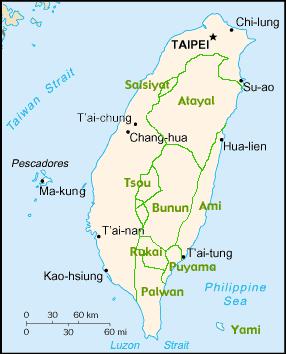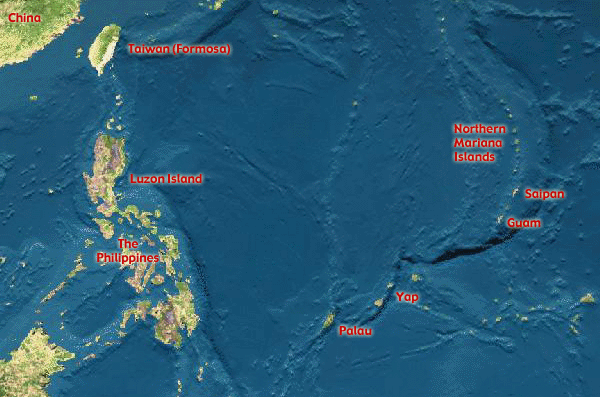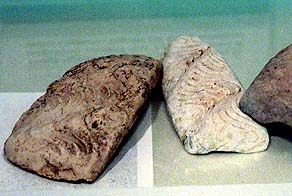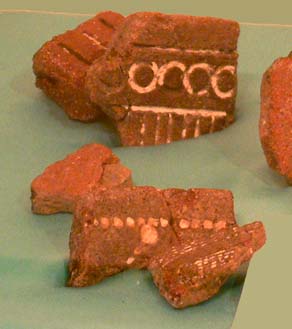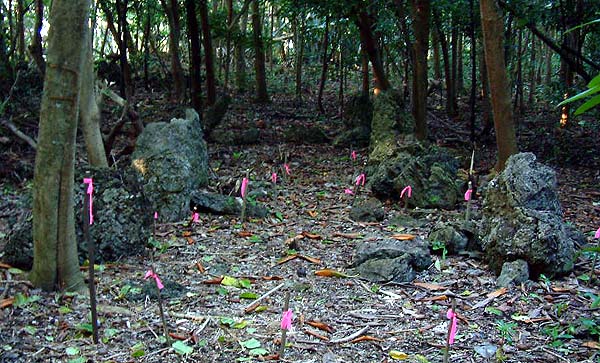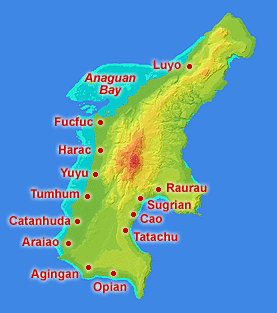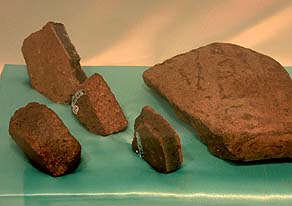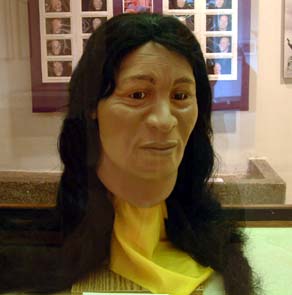 |
 |
 |
|||||
|
|
|
|
|
|
|
|
|
|
|
|||||||
| |
|
|
Petroglyph in the Kalabera cave, Northeast Saipan.
|
“The Northern Marianas is one of the earliest settled archipelagos in the Micronesian area,” Scott tells us. “The commonly accepted date for the first settlement in the Marianas is about 3500 Before Present (BP), but it’s now looking like that may be stretched back to 4,000 or perhaps 4,200 – 4,300 BP, which means roughly 2000 BC.”
|
||
|
|
||
“This was among the first areas in the remote Pacific settled, and from the linguistic and archaeological — and now the genetic — information, it’s starting to look like the people that settled this area came either through the Philippines, with very little time there, or possibly even directly out of Taiwan, because Taiwan is the area that was the dispersal point for the Austronesian people to spread into the islands of Southeast Asia. “The people here speak a Western Austronesian language, which sets them apart from the ‘nuclear’ Micronesian people—everybody else in Micronesia except the Yapese and the Palauans. The linguistic evidence especially tends to support the idea that the Chamorro didn’t spend a whole lot of time in the Philippines. So either they were on the vanguard and split off fairly early or maybe they were never there at all. I tend to think that they were, for a short time.”
|
|
|
“The aboriginal peoples of Taiwan are not the Han Chinese but the Austronesian people,” Noel explains. “There are six to nine groups of those people on Taiwan, with populations that range from twenty thousand to two-hundred thousand. One of them is the Ami people, and it is thought that we may probably come from them because a lot of their language is the same as Chamorro. In our language we have hami, meaning ‘us,’ and the people down there have ami, also meaning ‘us’.” "What’s interesting is that the Chamorros, the Palauans and the Yapese chew betel nut, and there’s a line there, it cut off. None of the other Micronesians chew betel nut. It was introduced by us."
|
| |
|
|
"This is also the only place in Oceania where we have documented evidence that rice was being produced in pre-European contact time," Scott says. "We don’t know how far back in time it goes, but we do have definitive evidence that it was being produced prior to European contact. The early European journals are full of mentions of rice being traded on the earliest ship contacts here. It seems to have been a very important ritual food. There’s no other place in the tropics where rice was being grown, and it suggests a possible connection with the Philippines. "
|
||
|
|
||
“The Chamorro possessed one of the fastest canoes,” Noel says, “that was documented when the Europeans first came here in 1521. Why did they come here? Maybe in the original homeland, either disease was taking over the population, or another group of people was conquering them, or people were dying, or it was overpopulated, we don’t know. But I guess they came to look for a better place. "When the Chamorros arrived here, they found the island to be big: there’s a lot of food and abundant resources, so they didn’t need to search for another island.”
|
|
|
“Pottery is one of the things that they brought with them. The early pottery is curiously made, fired, very beautifully done with a lot of the line designs and impressions. Since the Chamorros planted rice, they probably used this design of pottery to cook their food, to store water and to use as a container. This is from what we call the pre-Latte period, from 1,800 B.C. to 1A.D.” “In very general terms, we have two different phases in history," Scott explains. “We have what we call a pre-Latte phase, which is really large and is not very well divided up except by the pottery sequence, and that starts with the initial colonization and runs through the time when we first start having Latte architecture showing up. That is about a thousand years ago."
|
|
|
|
Latte site, Northern Saipan.
|
"There is only one place on the entire western coast of Saipan where Latte architecture remains, and that’s way up on the very northwestern tip of Saipan. Unfortunately due to the Japanese pre-war agricultural development, then the battle for Saipan during World War II, and then the massive military U.S. build up of the island following the occupation in 1944, the archaeological record—especially along the western coast—has been mostly destroyed. "
|
||
|
|
||
“There seems to be some major changes that were started with this Latte phase: the Latte stones themselves were constructed for the first time, and the population expands into areas that were never settled before, such as the inland areas, and less optimal coastal areas. In the pre-Latte phase, there tended to be very small populations that were clustered around embayments and beach areas, and in protected parts of the island. "And especially in the last few hundred years of the Latte phase, there are people all over the place: they’re way inland, they’re in the northern islands, they’re on the Aguijan, all these places that would not have been considered optimal in earlier times."
|
|
|
“Nobody remembers the really ancient villages because too much time has elapsed. With a few exceptions, we don’t even know the real names of those villages. There’s only a few place names on Saipan that we know are ancient. Obyan, Laolao, Agingan. And Susupe might be. "When Quiroga comes up here in 1684 on his first military operation, he mentions traditional villages. He mentions Obyan and Agingan and he mentions a number of other villages going up the western coast whose names we no longer have. You’d ask somebody here about the village of Agingan and they wouldn’t know what you were talking about."
|
|
|
|
“In the transitional Latte period, they started to quarry the latte stone. You can see that pottery becomes bulky, and has no grace," Noel points out. "It’s just meant to be constructed and utilized right away. It wasn’t meant to last for long, because the firing is very poor. And the only impression is the fingernail and the thumbprints. “There were stone pedestals for pounding soft food: breadfruit, coconut, taro, yams. One of the uses was to pound the rice, too. It was very important to pound the rice—it was considered a higher commodity when you had a visitor. You would bake rice soup, sort of like a drink or beverage. You pound the rice, cook it in water, mix it with coconut juice, and squeeze it out. We call it laolao, or now they call it petuli.”
|
|
|
“This spear point is made using a human femur. It’s a warfare spear, for close-range warfare. You don’t toss it like fifty or a hundred feet because it’s so brittle. It’s a close spear that, once it’s in, can easily come out. The sling stones are the ones they used for fighting. "The stone adzes and the shell adzes are what was used to carve a canoe, to build a wooden house, or to use as a hammer. It was an important tool for doing a lot of things, including carving the latte stones. “When French explorer Freycinet arrived in 1819, his team did drawings of the surviving items, so these objects are the things that pretty much survived at that time. And he also drew a sketch of how the Chamorros used to live, how they must have been dressed at that time.”
|
|
|
|
| “This skull is called ‘man of Taga’ because he was found in Tinian, right near the Taga area. He may be a relative of Chief Taga himself. This skull is a replica, cast from the original. The original skull was sent to the States, where a forensic scientist created this model to determine what Chamorros’ features really looked like. "In the back of the neck, there are four protruding points on the skull. That signifies that these people lifted heavy weights. The Chamorro here carried a lot of latte stone. So that’s how the muscle tends to hold the neck together. Those protrusions grew out to hold the head. Imagine if these people would have survived today. They would probably rule the Mr. Universe magazine!"
|
|
|
“Chamorro features include thick cheekbone, a long nose, and long, wavy hair. They’re big and massive. I think some of the genetics are still here. Not all the Chamorros from these islands were taken to Guam. A lot of pure Chamorro hid in caves in Rota. The biggest in our family is six-foot-five. The rest of my other family that went to Guam are huge. "If you go to Rota you might find some big, monstrous guy, three-hundred pounder, and some of the features are there, you can really tell. You also still see a lot of people in certain areas of Guam with big cheekbones and wavy hair. “Among the ancient Chamorro, the woman’s role was very powerful, same as elsewhere in Micronesia. There were the ‘first ladies,’ maga’haga, meaning the 'wife of the chief,' in every society. They selected the new chief whenever a chief died. The name of the family went through the women. The land inheritance was through the women. It’s only when the Spanish came here that they didn’t like it. They wanted it to be the man.”
|
|
|
|
Much more is explained about Chamorro culture on our Guam website, and we encourage you to go there for more information. Now we turn to the legendary setting of Saipan and the Northern Mariana Islands.
|
||
|
|
||
|
|
|
|
|
|

|
| Tanapag Home | Map Library | Site Map | Pacific Worlds Home |
|
|
|
|

|
|
|
|||
| Copyright 2003 Pacific Worlds & Associates • Usage Policy • Webmaster |
|||


